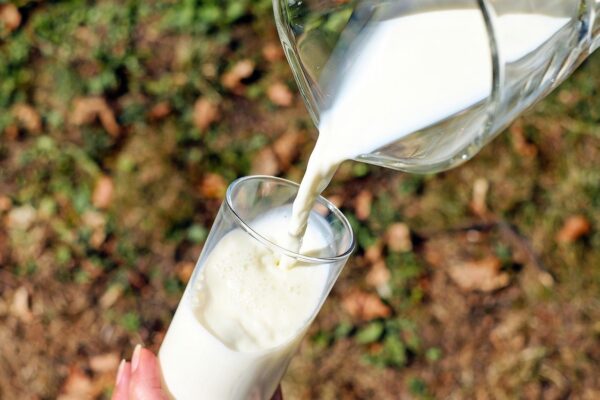Safety
pH Meters in the Diary Industry
What is the relevance of checking the pH of milk? You can test for impurities, spoilage, and signs of mastitis infection by checking the pH of the milk. There are several factors affecting the composition of milk, and pH measurements can help producers understand what might be causing certain compositional changes. Throughout the milk processing plant, the pH measurements are performed at various points. Fresh milk has a pH value of 6.7. When milk is spoilt by bacterial degradation the pH value will fall below pH 6.7.
Without getting too technical the basics are that lactic acid bacteria are responsible for the breakdown of the lactose and form lactic acid in the milk. The milk eventually reaches an acidic enough pH and curdling occurs along with the characteristic smell and taste of “sour” milk.

When milk has a pH value higher than 6.7, it potentially indicates that the milk may be from cows infected with mastitis. Mastitis is a present challenge with dairy milking cows. When a cow has mastitis the cow’s immune system will release histamine and other compounds in response to the infection. With this issue, blood is allowed by the body to pass through to the milk. Blook plasma is slightly alkaline and this makes the milk’s pH increase. So pH measurement is a quick way for milk producers to check for infections without doing a somatic cell count which takes more time, and money for lab testing.
Understanding the pH of raw milk can also help producers optimize their processing techniques. For example, in operations that use Ultra High Temperature (UHT) processing, even small variations from pH 6.7 can affect the time required for pasteurization and the stability of the milk after treatment
Product Quality and the Importance of pH measurement
If you are familiar with pH measurements you will know that the functional definition of pH is the measurement of the acidity or alkalinity of a solution commonly measured on a scale of 0 to 14. pH 7 is considered neutral, with lower pH values being acidic and higher values being alkaline or caustic. pH is the most common of all analytical measurements in industrial processing and since it is a direct measure of acid content [H+], it clearly plays an important role in food processing.
Among the reasons for measuring pH in food processing include:
• You want to produce products with a consistent well-defined properties
• To produce efficiently, products at optimal cost
• To avoid causing health problems to consumers
• To meet regulatory requirements
The pH range of foods varies considerably. Due to the logarithmic nature of the measurement, even small changes in pH are significant. The difference between pH 6 and pH 5 represents a ten-fold increase in acid concentration; a change of just 0.3 represents a doubling of acid concentration. Variations of pH can impact flavor, consistency, and shelf-life.

Measuring pH
The most common method for pH measurement is with a pH electrode. These sensors act as a small battery, generating a voltage signal proportional to the solution pH. Manufacturers of pH measurement equipment offer hundreds of styles of pH electrodes to meet the demands of the thousands of unique application challenges.
It is common in the food industry to make pH measurements by taking a grab sample from the process and bringing it to a central lab for analysis. For dynamic processes, the time delay in getting the lab result is less than ideal for process control. Optimal control is obtained by in-line pH analysis.
Today we have the access to non-glass pH electrodes, which eliminates any concern about glass breakage and allows for continuous pH measurement, directly in the process line.
pH plays a critical role throughout the processing stages in the food industry. In the dairy industry, for example, incoming raw milk is first checked to assure freshness. During butter production, bacteria cultures convert lactose (milk sugar) to lactic acid, dropping the pH from 6.6 to 4.8. Careful monitoring and temperature control are required to slow down bacteria activity to prevent over-acidification. In the making of cheese, the enzymes used are particularly sensitive to pH with variations of ± 0.1 pH impacting reaction activity by as much as 50 percent. Finally, the cheese aging process can be accurately monitored using the puncture probe. In addition to the specific dairy product processes, facility water purification, plant utility water, and wastewater, all require pH control for proper operation.
Not all pH measurements are made in liquids. A unique application uses a “puncture” electrode specifically designed for measurements in semi-solid foods. Fresh meat quality will deteriorate rapidly if proper storage conditions are not maintained. pH is a valuable rapid parameter to monitor meat quality to prevent or detect quality deterioration. Monitoring the aging of cheese or sausage can also be determined with a simple jab. Product storage temperature can then be controlled to optimize the aging process.
If you would like to purchase a pH meter please give us a call on +27 11 28 6099.

